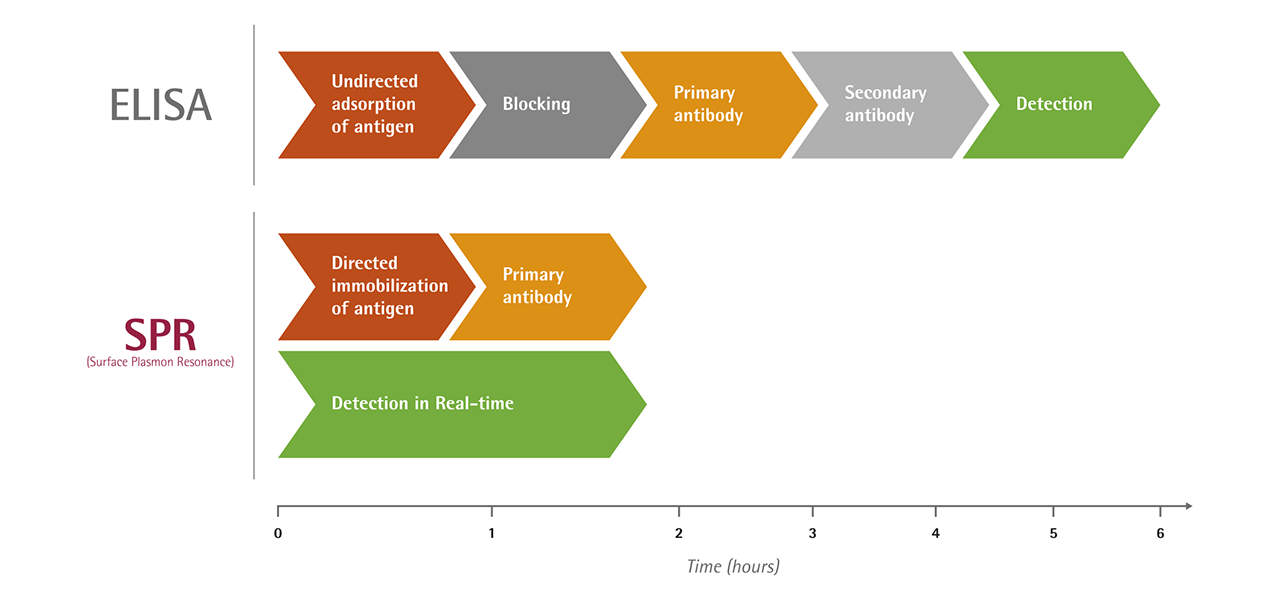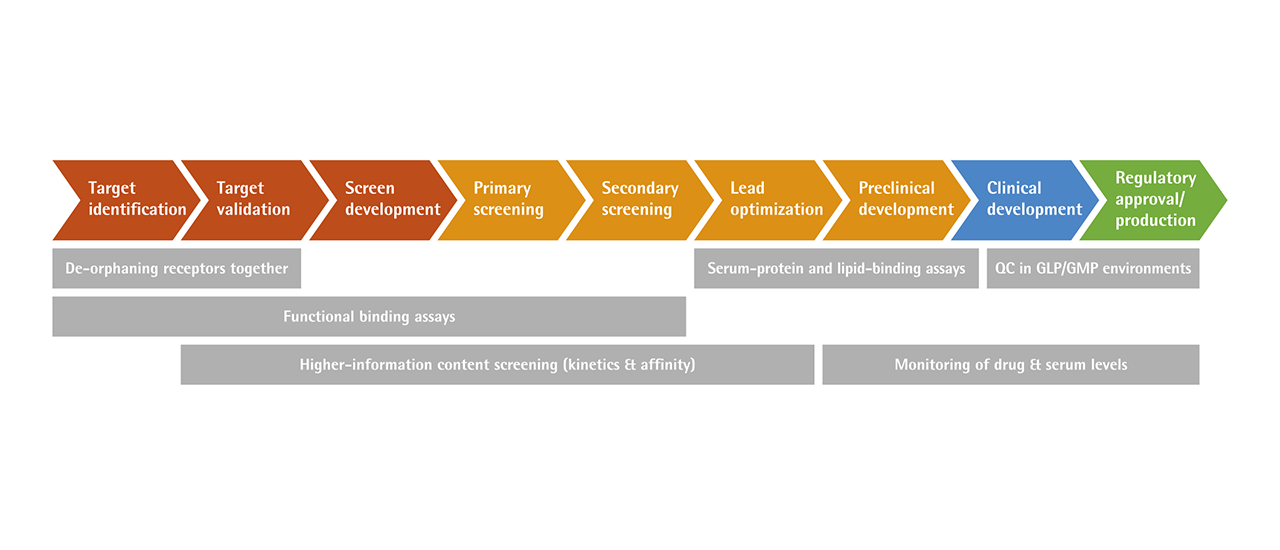Label-free study of molecular binding interactions using SPR (Surface Plasmon Resonance) provides scientists with several advantages not available via traditional investigative methods like ELISA. This cost-effective SPR technology offers detailed insights into molecular interactions, and eliminates the confounding variables that sometimes result from the use of fluorescent and radioactive markers.
Fluorescent reagents (such as antibodies) can cost from $50 to over $500 per vial. Radioisotopes often require extensive biohazard training. Using multiple fluorescent reagents requires compensation for spectral overlap, which can give either false positive or false negative responses. Invalid outcomes therefore jeopardize the accuracy of the data interpretation and the conclusions of the study. Label-free capabilities simplify experimental protocols and provide more reproducible results. Accurate results facilitate efficient use of financial and human resources.
Perhaps one of the most important advantages of SPR technology is that it increases the integrity of data by minimizing researcher bias. Bias is sometimes involuntarily introduced into studies by using markers which require additional post-analysis and/or are different between labs.
Using more traditional methods, lab protocols can vary and negatively affect the reproducibility of scientific studies. Instead, SPR establishes a more consistent experimental platform, allowing for easily reproducible results both within and between research groups. Traditional methods only allow for the study of one parameter at a time at a fixed setting. SPR's lab-on-a-chip, label-free capabilities allow for real-time manipulation of the experimental settings. This saves sample, labour and time (Fig. 1).

| ELISA | SPR | |
|---|---|---|
| Time to result | >5–6 h | 1–2 h |
| Information provided | Yes/no binding; concentration | Affinity; kinetics; thermodynamics; concentration; activity, yes/no binding |
| Time information is provided | Last step | Real-time online monitoring through all process steps |
| Number of steps in workflow | 5+ | 2–3 |
| Limit of detection | Typically low ng/mL range, sometimes pg/mL | pg/mL |
| Precision (intra-assay) [CV%] | 5–10 | <1–5 |
| Precision (inter-assay) [CV%] | 7–15 | ~5 |
| Analytes | Proteins/peptides | LMW compounds (<100 Da), peptides, proteins, DNA, viruses, bacteria |
| Type of interaction(s) | Only high affinity interactions | Weak - high affinity interactions |
| Advantages | No washing
No secondary reagents Real-time data and control Fully automated Easy assay optimization | |
| Disadvantages | Multiple reagents
Multiple washing steps End-point assay/difficult to optimize Plate-based denaturation Plate-based epitope inaccessibility Plate-based blocking step Weak affinity antibodies are washed away |
When radioisotopes and fluorescent dyes are used to observe molecular binding interactions, a user's additional parameter selection can skew the resulting data. The accuracy and reliability of the study may be lost. Labels increase the need for more complicated analyses, which require researchers to complete weeks or months of training before being able to confidently and correctly interpret the data. In contrast, label-free studies using SPR allow the user to read and analyse the data in real-time. Post-processing is necessary, but aided by user-friendly and intuitive software, affording the researcher a robust and reliable investigative method.
Methods of studying molecular interaction using labels, such as ELISAs, do work and have led to the development of many life-saving therapies. SPR is seen by many as the next step forward because it eliminates the need for costly and confounding markers that vary drastically between labs, institutions and countries. Due to its high information content, sensitivity and precision, SPR is used in almost every step of pharmaceutical R&D and QC (Fig. 2).

Variability in protocols has created inefficiencies which hamper the progress of biomedical research. SPR provides a more efficient and time-saving method to answer important research questions quickly, ultimately leading to the quicker development of therapeutics and saving more lives.
We hope you found this whitepaper helpful and informative. You can read more about SPR elsewhere on XanTec's website.
If you would like advice on which SPR system best fits your laboratory needs, please do not hesitate to contact us. Also, please contact us if you would like to suggest topics for future whitepapers, or if you have any suggestions to make our whitepapers even better.